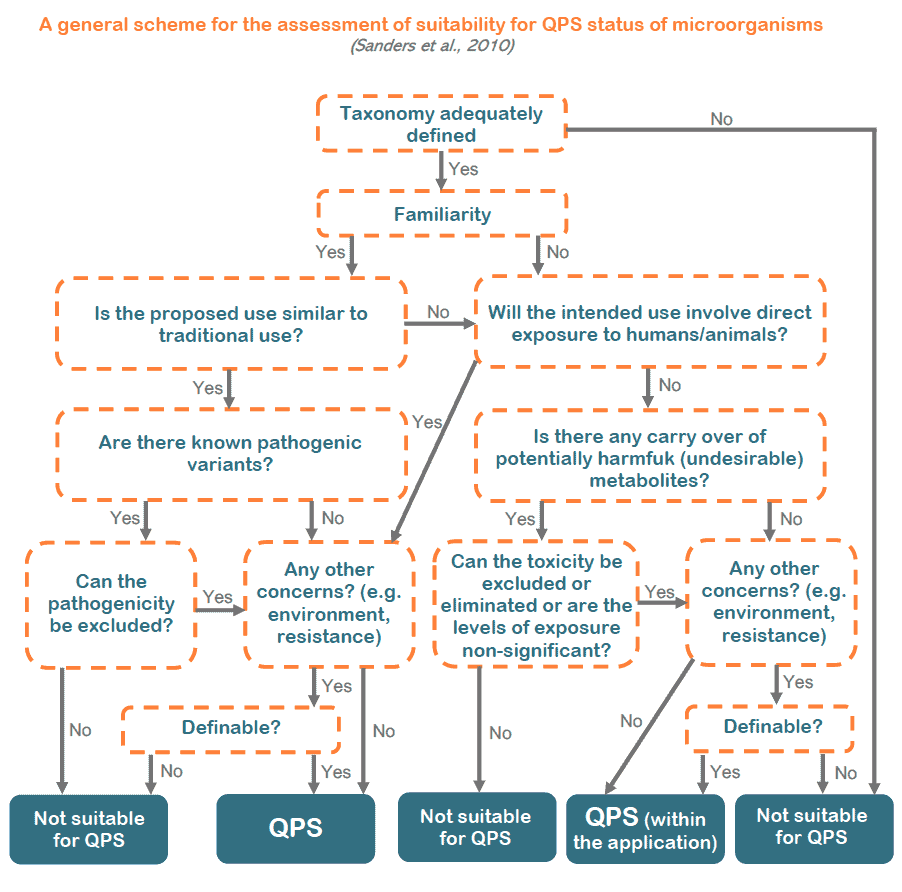 QPS means “Qualified Presomption of Safety”. This is a list serving as a tool to quickly identify risks related to the use of a microorganism. Generally, lactic acid bacteria considered as probiotics have this status.
QPS means “Qualified Presomption of Safety”. This is a list serving as a tool to quickly identify risks related to the use of a microorganism. Generally, lactic acid bacteria considered as probiotics have this status.
What does QPS mean?
QPS is an acronym of Qualified Presomption of Safety.
This is a European process carried out by the European Food Safety Authority (EFSA), established in 2007. The objective is to establish a safety assumption based on reasonable evidence. It assesses the safety of bacteria, yeasts, fungi and viruses when they require market authorisations as sources feed additives, food enzymes, food additives and flavourings, and novel foods or plant protection products.
The species of microorganisms considered safe are then grouped in a list: the “list of microorganisms with QPS status”.
However, the QPS list is not a positive list of ferments authorised for human consumption. Specific regulatory procedures can be necessary (e.g. for food additive, food enzyme and novel food authorizations)
What is the objective?
The aim of the QPS approach is to simplify and harmonise risk assessment in the European Union and to save time for experts. Indeed, it provides a generic risk pre-evaluation procedure. This avoids having to repeat a complete assessment for a microorganism with a history of safe use already demonstrated.
What criteria should be considered to obtain QPS status?
Experts check the following criteria in order to grant (or not) QPS status to a microorganism:
- The taxonomy identity: group, species, subspecies;
- The body of knowledge to establish its safety: history of use, ecological data, scientific literature, previous industrial uses, etc;
- The safety concerns in relation to pathogenicity and virulence, such as antibiotic resistance;
- The intended use.
A species is included in the QPS list if it does not pose a safety risk to humans, animals or the environment. If not, a full safety assessment is initiated.
Lactic acid bacteria (including some probiotic species) were among the first groups evaluated.
How does the evaluation work?
The microorganism is notified to EFSA. The Scientific committee then assesses its suitability for inclusion in the list according to the criteria mentioned above. If it meets all the criteria, the microorganism is included in the list and a publication on the EFSA website is made.
The experts will then review any new scientific information available to determine whether the microorganisms already included in the list will still be suitable for QPS status.

How often is the list updated?
The list is updated periodically. It has been revised annually between 2007 and 2014. Since 2014, updates are published every 3 years. Nevertheless, the list of micro-organisms is kept up to date and re-evaluated approximately every 6 months in a statement by the Scientific committee.
The only valid list is the most recently published scientific opinion.
Where can I find the list of microorganisms with QPS status?
LC
References
POT B, GRANGETTE C. Les probiotiques : définition, sécurité et réglementation. 2015
SYNPA. Note « ferments et QPS ». 2019




